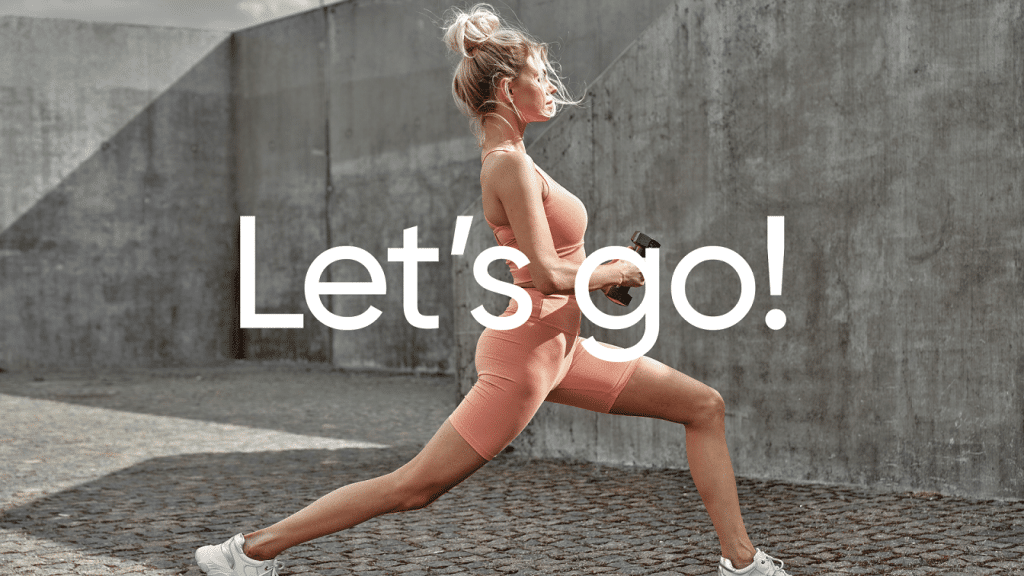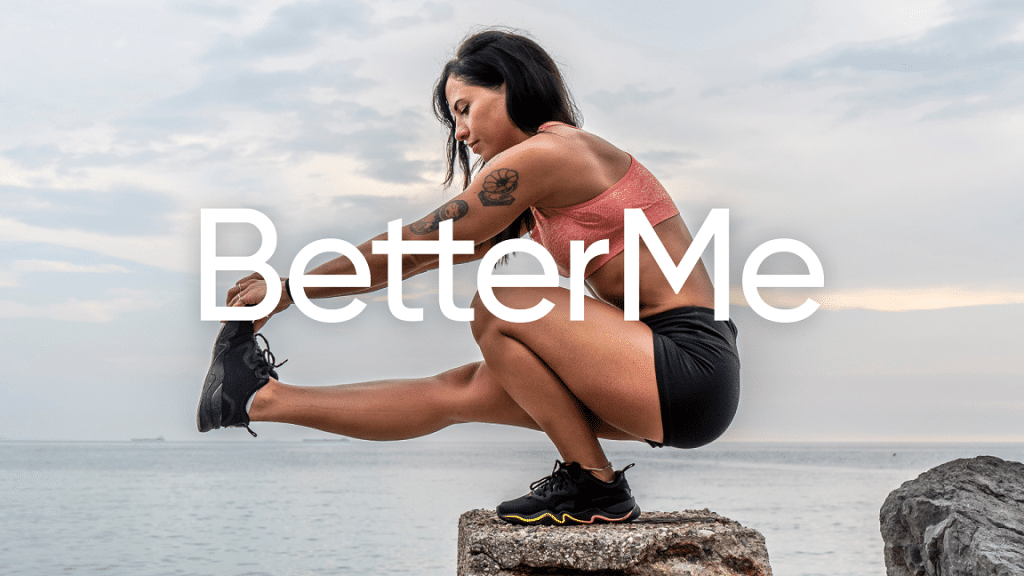You woke up this morning and unconsciously stretched yourself before walking to the bathroom, or after sitting for a few hours in front of your desk, you stood up to stretch your legs and arms. It seems like a daily dose of stretching makes your blood flow better, but what are the different types of stretches, and how can they help you? Here is everything you need to know.
How many types of stretches are there for each muscle? Stretching is an exercise that you can consciously or unconsciously take part in. Some stretches may involve motion, while others are motionless. Understanding the types of stretches and what muscles they stretch will help you know which activity to perform and how to do it to enjoy the maximum benefits of this activity.
Types Of Stretches
Which types of stretches are for reducing muscle stiffness? Stretches are used to warm you up before a workout, loosen stiff muscles, and cool you down and prevent post-workout soreness after an exercise (2). They also enhance flexibility and mobility. According to Human Kinetics, there are 4 main types of stretches: static or dynamic and passive or active. Others are variations of these 4 main ones.
-
Dynamic Stretching
You need to repeatedly move a body part through a challenging but comfortable range of motion. For instance, swinging your arms and legs in a gentle, controlled, smooth, and deliberate manner to the limits of the range of movement (1).
Advantages:
- It enhances dynamic flexibility and is quite helpful in warming up your muscles before a workout.
- It requires more thoughtful coordination than static stretching but is more beneficial in enhancing functional range of motion and mobility (1).
Examples:
- Arm circles- Allow the arms to drape to your sides, then rotate them in circles, either backward or forward.
- Lunge with a twist- Stand, then take a step forward with your right foot and reach your left hand across your body toward the ground. Go back to the starting position and do the same with the other side.
Others include leg swings, torso twists, and walking lunge.
Note:
- Stop stretching when you feel tired. Do not force yourself because when muscles get tired, their elasticity decreases, which causes a decrease in flexibility and range of motion.
Read More: How Often Should You Stretch To Enjoy The Benefits Associated With Stretching
-
Active Stretching
When doing active stretching, you move one muscle group to stretch another. You assume a position, then try to maintain it as long as possible. It may be difficult to hold and maintain the active stretch for over 10 seconds because of the muscular force needed to generate the stretch.
Advantages:
- Other than strengthening the agonistic muscles, active stretching also promotes flexibility (3).
- It is a lower risk because you control the stretch force as you’re not using any outside assistance (leverage, strap, or stretching device).
- They are movement-oriented, therefore they may generate muscle heat, which leads to increased muscle flexibility.
- Active stretching involves muscle activation and contraction. This makes the muscles relax more.
Example:
- Lifting the leg high, then holding it in the extended position with any support.
- Some forms of yoga movements and stretches, such as tree pose where you use only the strength of your glutes and hip flexors to lift the bent knee. Another example of active yoga movements is performing the seated spinal twist without the help of the elbow to deepen the stretch.
-
Passive Stretching
Also known as static-passive stretching or relaxed stretching. Assume a position and maintain it with outside assistance, for instance, another part of your body, a partner, or other equipment such as leverage, strap, or stretching device. The external aid helps you hold the stretch in place.
Advantages:
- Slowly doing static-passive stretches may relieve spasms in injured muscles that are in the process of recovery.
- A quick cool-down after vigorous exercise helps minimize post-workout soreness and muscle fatigue.
They are the easiest to perform, and if performed properly, they may enhance flexibility and range of motion.
Examples:
- Lifting your leg then holding it with your hand.
-
Static Stretching
This is the most common type of stretching whereby you maintain the stretch in a comfortable yet challenging position for a specific period (between 10 to 30 seconds). Unlike in passive stretching, where an individual receives support from another person or equipment to bring the joint to its range of motion, during static stretching, you stretch a muscle to its farthest point, then maintain that position. Therefore, the two terms do not refer to the same thing and should not be used interchangeably.
Advantages:
- It is considered safe and effective for enhancing overall flexibility. However, if your end goal is to improve your range of motion, it is not the stretching type for you.
Looking for a way to break the vicious cycle of weight loss and tone up all the jiggly parts? Watch the extra pounds fly off and your muscles firm up with the BetterMe app!
Different Types Of Static Stretches
What are the types of static stretches? One common type of static stretching is isometric stretching. As it does not call for any active movement, it falls under the umbrella term that is static stretching. When you start feeling tight during a stretching exercise, you essentially need to contract the targeted group of muscles instead of lengthening or shortening them. You can manually apply the required resistance to your limbs (for example rolling onto the ball of your foot to prevent flexing while using the calf muscles to try and straighten your instep) or get help from a partner (having them hold your leg up as you try to force your leg back down the ground).
Isometric Stretch
Here is how to correctly perform an isometric stretch:
- Assume a passive stretch position.
- Tense the stretched muscle by resisting it against some immovable force, e.g., wall, for 7-15 seconds.
- Relax the muscle for about 20 seconds.
Advantages:
- It is much more effective than active or passive stretches on their own. They help develop strength in the tensed muscles, therefore, they are a quick method of enhancing static-passive flexibility.
- They reduce the amount of pain associated with stretching.
Note:
- You may incorporate isometric stretches into a dynamic strength training routine.
- You should not perform isometric stretches more than once a day for a specific group of muscles.
- It is not recommended for children and teenagers because their bones are still developing. Since kids and adolescents are flexible enough, isometric stretches may damage their tendons and connective tissue.
Other Static Stretches
Other examples of static stretches include:
- Sitting on the floor, then grabbing your toes to loosen the back of your thigh.
- Lying on your stomach and pulling your foot to your butt to stretch the front of your thigh.
- Posterior capsule stretch can be done whether you’re standing or sitting. Bring your elbow across your body horizontally, maintain the stretch by using the opposite hand to hold the elbow. Hold for about 15 seconds, then repeat several times before switching hands.
- Others are shoulder stretch, side bends, quadriceps stretch, and hamstring stretch.
Read More: Stretching For Weight Loss: Feel-Good Exercises That Kick Extra Pounds To The Curb
Other Stretching Techniques
-
Ballistic Stretching
To put it simply, ballistic stretching is bouncing into and out of a stretched position. As long as you use quick and jerky movements to push your body beyond its normal range of motion, you’re doing everything right.
Examples:
- Bouncing down to touch the toes.
Note:
- It is risky and may result in injury since muscles are not allowed to adjust and relax in the stretched position. On the contrary, muscles may tighten because the stretch reflex is repeatedly activated.
-
PNF (Proprioceptive Neuromuscular Facilitation) Stretching
This is the most effective way to enhance static-passive flexibility. It is not a type of stretching, but it is a mix of passive and isometric stretches to attain maximum static flexibility. You may need a partner to help provide resistance against the isometric contraction and passively take the joint through its increased range of motion.
Examples:
- The hold-relax or contract-relax where the muscle isometrically contracts between 7 to 15 seconds, then briefly relaxed for 2-3 seconds. It is passively stretched instantly for about 10-15 seconds before resting for 20 seconds.
- The hold-relax-contract, contract-relax-antagonist-contract, or contract-relax-contract entails doing isometric contraction of the agonists, then antagonists for 7-15 seconds each, before being relaxed for about 20 seconds.
- The hold-relax-swing, same as hold-relax-bounce, involves the use of ballistic or dynamic stretches together with isometric and static stretches. Due to its high-risk nature, this is only for those with a high level of control over their muscle stretch reflex, for example, the most advanced athletes or dancers.
Note:
- PNF is only for professional dancers and athletes, under the guidance of an experienced coach or training supervisor. It cannot be done more than once a day. Also, children and adolescents should not attempt PNF.
If you tend to let yourself off the hook, raise the white flag when things get tougher than you expected, send yourself on an unconscious binge-eating trip – BetterMe app is here to help you leave all of these sabotaging habits in the past!
Examples Of Common Types Of Stretches And What Muscles They Stretch
Here are some examples of different kinds of stretches:
-
Morning Stretches
Stretching in the morning is a great way to get energized for the day. It relieves you from the previous day’s tension or stress and the discomfort of a bad sleeping posture. They include:
- Upward Stretch. Raise your arms towards the sky and lace your fingers together. Elongate the spine and feel the stretch in your ribcage and arms, hold for 10 seconds, then you can include a sitting side stretch to target the torso. This is a great way to wake your body up and get the blood flowing.
- Neck and shoulder stretch. Turn the left ear over to your left shoulder, then hold for 20 seconds. Turn the right ear over your right shoulder and hold for 20 seconds. Relax, then roll your shoulders to the back and then front. Lift the shoulders to your ears as you tense the muscles and drop them. Repeat the steps 3 times. This morning stretch will ease the tension you may have accumulated while sleeping.
Others include the reclining spinal twist, which relieves stress in your lower back, lying side quad stretch, hamstring or calf stretch, cobra stretch, knees-to-chest, shoulder stretch, etc.
-
Leg Stretches
Before or after a workout, or when you feel your leg muscles are tight, it is good to stretch them out. For instance, the supine leg stretch works the lower back, calf, ankle, and hamstring. Here are the steps you need to follow:
- Lie on your back, knees bent, and feet flat on the floor.
- Bend one knee, hug it onto your body, and slowly kick that leg up towards the ceiling as you straighten and pull it towards the torso.
- Do this until the tension is felt behind your leg, then point and flex your foot 3 times, do 3 ankle circles in each direction, lower your leg, and repeat the other leg steps.
Others include the inner thigh stretch, hamstring or calf stretch, and the quad stretch. Note that most leg stretches are the same type of stretches before running.
-
Stretches For Achilles
What are the types of stretches for your Achilles? Inflamed or tight Achilles tendons are uncomfortable. Try runners stretch, calf stretch, toe-to-wall stretch, or heel drop to get relief. According to Healthline, the calf or runner’s stretch loosens the tendons. Here are the steps involved in the runner’s stretch:
- Place your hands on a support, for example, a chair or wall. Your hands should be at the same level as the eyes if you are using the wall.
- To stretch the left leg, step it behind you, ensuring that the back heel is on the floor and the toes are pointing straight ahead.
- Bend your right knee towards the wall. The back leg should be straight.
- Lean towards the wall until your calf stretches gently. Hold for 30 seconds, then repeat the steps two more times before switching legs. Note that you should not lean too far.
-
Upper Body Stretches
What types of stretches are upper body stretches? After an upper body workout, stretching is recommended to help relieve the soreness. Appropriate stretches include wide tip-over tuck, goddess eagle, reverse triangle, twisting extended side angle, triceps stretch, shoulder stretch, shoulder-opening spinal twist, wrist stretch, seated heart-opener, bow pose, reverse planks, half wheel, and child’s pose with reach. Reverse triangle, for instance, has an effect from fingertips to toes and works on the side of your torso and lats as well. The steps involved in this workout, according to PopSugar, are:
- Stand with legs apart in a straddling position.
- Turn your right toes out 90 degrees, and the left ones in 45 degrees.
- Arch your back gently and lower your left hand down. Rest it at the back of your left leg.
- Lift your right arm above your head and feel the stretch through the right side of your body as you lower your hips with your front knee pressed forward so that it is directly over the right ankle.
- Maintain this position for five complete breaths, then repeat the other side.
The Bottom Line
Now that you understand the different types of stretches, make sure to include some of the above-mentioned stretching exercises in your routine. Get a green light from your doctor before trying any type of stretch, especially after an injury. Happy stretching!
DISCLAIMER:
This article is intended for general informational purposes only and does not address individual circumstances. It is not a substitute for professional advice or help and should not be relied on to make decisions of any kind. Any action you take upon the information presented in this article is strictly at your own risk and responsibility!
SOURCES:
- Acute Effects of Dynamic Stretching on Muscle Flexibility and Performance: An Analysis of the Current Literature (2018, pubmed.ncbi.nlm.nih.gov)
- Stretching Before and After Exercise: Effect on Muscle Soreness and Injury Risk (2005, ncbi.nlm.nih.gov)
- The effects of stretching on strength performance (2007, pubmed.ncbi.nlm.nih.gov)

















